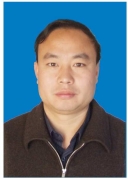LIANG Sheng-kang

Associate Professor
Telephone: +86-532-66786355
E-mail: liangsk@ouc.edu.cn
Educational Background
1991-1995, B. S., Organic chemistry, ShanxiUniversity,Taiyuan,1995
2000-2005, Ph. D., Marine Chemistry, Ocean University of China,Qingdao
Career History
1995-2000, Researchassistant in organic-microbiological compound fertilizer Study Group, ShanxiUniversity,Taiyuan, China.
2005-2009,Lecturer, College of Chemistryand Chemical Engineering, OUC.
2010-present:Associateprofessor, College of Chemistryand Chemical Engineering, OUC.
2009-2010: Visitingresearcher, University of South Carolina.
Research Interests
·To understand of sources, biogeochemistry and bioavailabilityof dissolved organic nitrogen in estuary and coastal ecosystems.
·To restore of natural wetland ecosystem andto understand mechanisms of wetland on the reservoir water quality improvementand the non-point source pollution control.
·To develop the technologies of industrial-scale production ofbiosurfactants and develop biosurfactant-enhancing remediation technologies forthe sites contaminated with heavy metal and hydrophobic organic pollutants.
Representative Publications and Achievements
[1]Zhang Gui-cheng Liang Sheng-kang*, Han Xiu-rong, ShiXiao-yong, Wang Xiu-lin. The distribution of neutral sugars and its compositionas indicators of organic matter degradation state in the EastSeasediments. Chinese Journal of Oceanology and Limnology (In press).
[2]Li Jun-feng, Li Hong-fang,Liang Sheng-kang*. Characterization of a bacteriocin-like substance producedfrom a novel isolated strain of Bacillus subtilis SLYY-3. Indian Journal ofMicrobiology (In press).
[3]Qiao Xu-dong, Wang Bao-dong, Sun Xia, Liang Shengkang. NumericalSimulations of Nitrogen and Phosphorus Seasonal Variations in Coastal Guangxi Bays, China. Journal of OceanUniversityof China.(Inpress)
[4]Song Dan-dan, Li Yi-ming, LiangSheng-kang*, Wang Jiang-tao. Study onthe micelle behaviors of sophorolipid/rhamnolipid mixed biosurfactant systems.Colloid and Surface A: Physicochem. Eng. Aspects, 2013, 436: 201-206.
[5]Chen Qing-guo, Bao Mu-tai*, Fan Xiao-ning, Liang Sheng-kang,Sun Pei-yan. Rhamnolipids enhance marine oil spill bioremediation in laboratorysystem. Marine Pollution Bulletion, 2013, 71: 269~275.
[6]Song Dan-dan, Liang Sheng-kang*, GuoLi-guo, Wang Jiang-tao. Evaluation on biodegradability of Hydrocarbon biomarkers in afield trial for oil-contaminated shoreline bioremediation. ForensicsEnvironmental Bulletin, 2013, 22 (4): 1070-1076
[7]Song Dan-dan, Liang Sheng-kang*, Wang Jiang-tao, Yan Li-mei. Development of High Efficient and Low Toxic Oil SpillDispersants based on Sorbitol Derivants Nonionic Surfactants and GlycolipidBiosurfactants. Journal of Environmental Protection, 2013, 4, 16-22.
[8]Qian Guo-dong Li Ke-qiang*, Shi-Xiao-yong, Wang Xiu-lin,Liang Sheng-kang. Estimation of Environmental Capacity of PetroleumHydrocarbons in Jiaozhou Bay, China.Fresenius Environmental Bulletin, 2012, 21(1): 48-53.
[9]Wang Chang-you, Wang Xiu-lin, Su Rong-guo, Liang Sheng-kang. No detected toxic concentrations in situ algal growthinhibition tests - A convenient approach to aquatic ecotoxicology.Ecotoxicology and Environmental Safety, 2011(74): 225-229.
[10]Xiao-meng Wang, Xue-hai Liu, Sheng-kang Liang*,Xiao-yong Shi, Xiu-lin Wang, 2009. The effect of the brine discharged from desalination plant on thesalinity distribution in JiaozhouBay. Acta Oceanologica Sinica.31(1):44~51. (In Chinese)
[11]Liang Shengkang*,Wang Xiulin, Xin Yu, et al. Effect of rhamnolipid biosurfactant on thedesorption and biodegradation of sorbed phenanthrene in marine sediment. Chinese Journal of Geochemistry, 2006,25: 247.
[12]Xiulin Wang*,Liangyu Gong, Shengkang Liang et al. Algicidal activity of rhamnolipidbiosurfactants produced by Pseudomonas aeruginosa. Harmful Algue, 2005(4): 433-443.